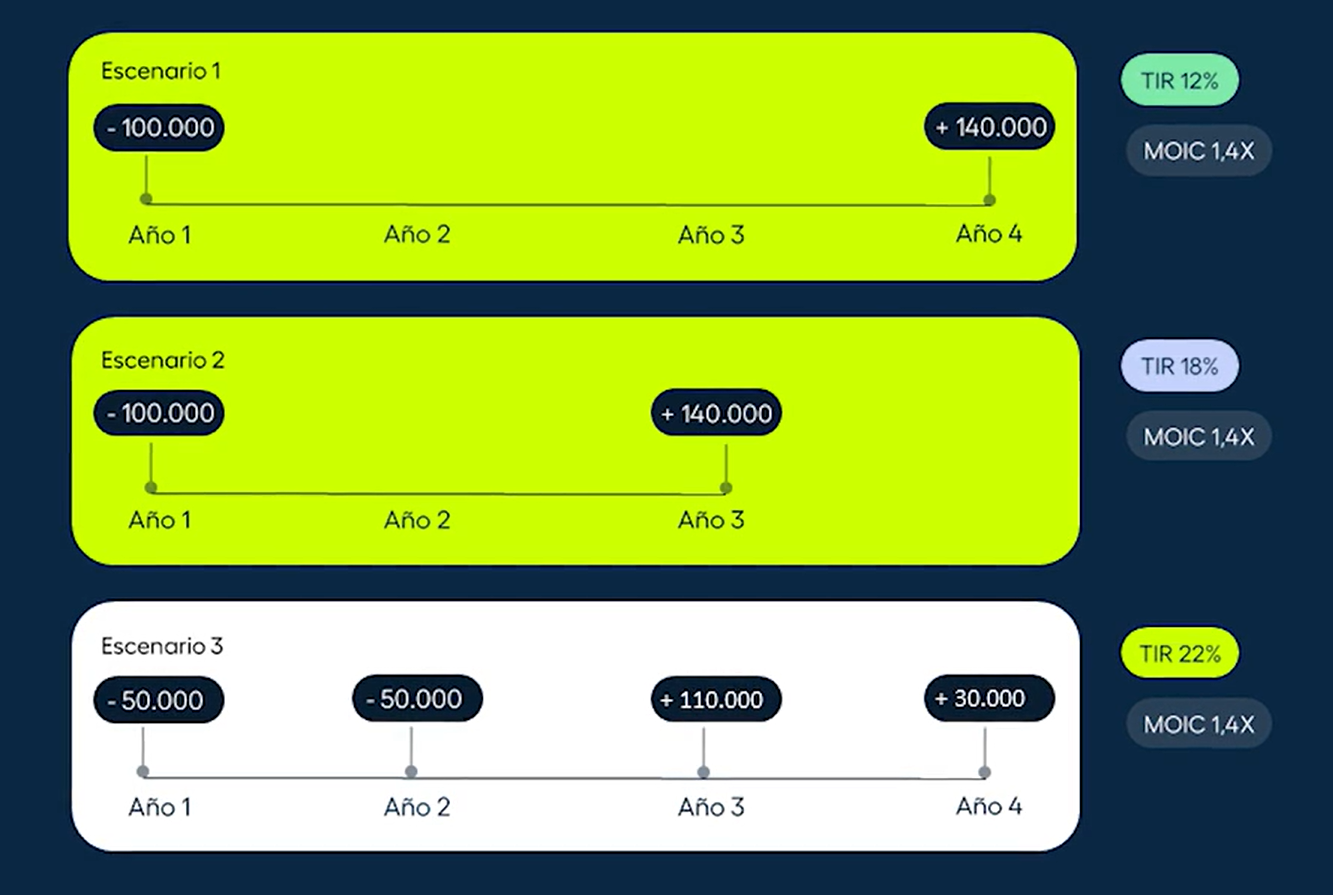00:48
1:22
2:05
The IRR is the internal return rate, and it is an indicator that shows the return of your investment over time, expressed in percentage (%). It ultimately is the difference between the final value and the initial value of your investment. Time is extremely relevant in the IRR.
As the IRR is used to measure the profitability of other types of investments, we are almost all more familiar with finding out the profitability through the IRR. However, the MOIC is an indicator that mainly shows the return on private equity funds, it is expressed as "x" and it is the multiple over the invested capital.
Here is an example: If I give you €2,000 and you return €4,000, we will have multiplied that investment by two, as a result the MOIC would be 2x.
In scenario 1 and 2 we make an investment of €100,000 and obtain a return of €140,000; the only difference is the time horizon, four years in the first and three years in the second. As we can see, the MOIC is the same (1.4x your investment); however, the IRR has increased in scenario 1 to 2 from 12% to 18%: why? Because, in spite of the same rerun, the time horizon is shorter. What would you prefer, to receive the money earlier or later?
In scenario 3, we already see how we maximise returns in private capital, and it is through cash flows: the famous capital calls and distributions (money inflows and outflows).
Let's use the same example: a €100,000 commitment that I will request from you through capital calls. I am going to initially ask you for €50,000 and then later another €50,000, and I will return it to you when selling the invested companies after creating value.
It is always a good idea to take into account both the IRR and the MOIC when measuring your returns.

This content is merely indicative. This video is merely financial training offered to you by Crescenta, without the intention of giving any type of personalised investment recommendation.
It is neither any type of advertising of financial instruments nor a recommendation or purchase offer.
Time is not a relevant factor when calculating a fund's IRR
The MOIC measures the number of times the initial investment has multiplied
The IRR is the difference between your investment's final and initial value
When you click on any underlined term, you can see a definition and example of each concept

When you click on any underlined term, you can see a definition and example of each concept

When you click on any underlined term, you can see a definition and example of each concept